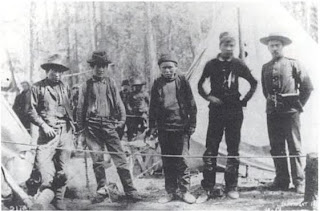
On this day, March 24, 1894 there was an infamous murder in Dyea. This murder involved Scum Doo or Scundoo, a native medicine man/witch doctor (known to be a medicine man because he was born with a double crown and had red hair).
“In July, 1894, Skun-doo was arrested for causing the death of an Indian woman, Ches Oqhk, while practicing shamanism. A death had occurred in the village, and the relatives of the deceased employed his services, at a fee of 20 blankets, to determine the cause of death. As a result of his divinations, Skondoo settled on Ches Oqhk, suspected of being a witch, as the cause of death. Under his direction, the deceased’s family bound the woman for 10 days, and she died from lack of food and water.
Because she had died, she was declared to have been a witch, establishing her guilt (The Alaskan 1895). Gleh-Naw, a member of the woman’s family, made a complaint to the white authorities and Skondoo was arrested for murder and taken to Juneau to stand trial (U.S. court Records 1894) As an outcome of the trial, he was found guilty and sentenced to 3 years at San Quentin for manslaughter (The Alaskan 1895)” (Emmons)
Scundoo was sent to San Quentin for some years. He returned home and was photographed in 1907 by W.H. Case, see photo above.
The Tlingit Indians,by George Thornton Emmons, Frederica De Laguna;
Sackett: 1977 pp 77-80







